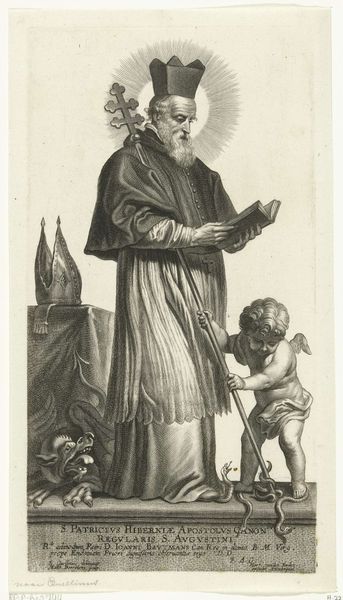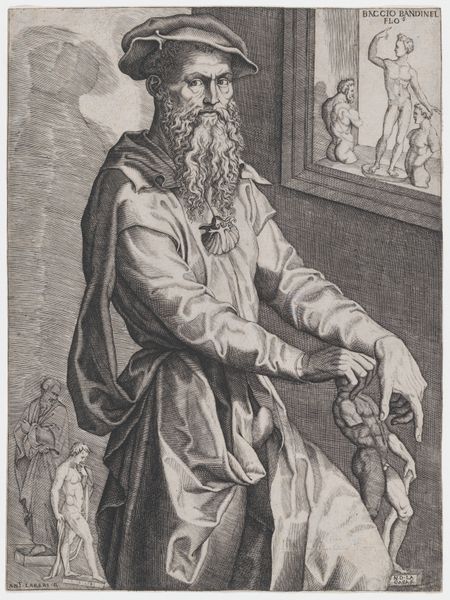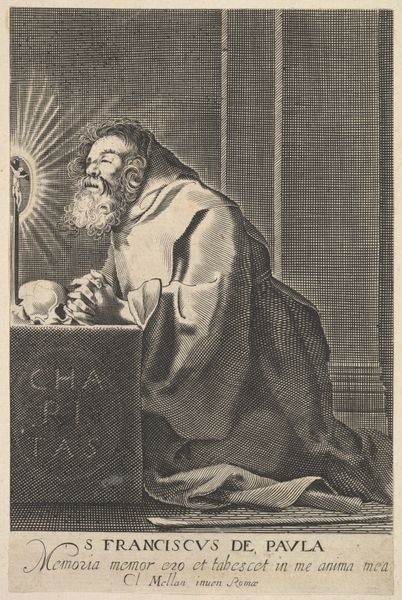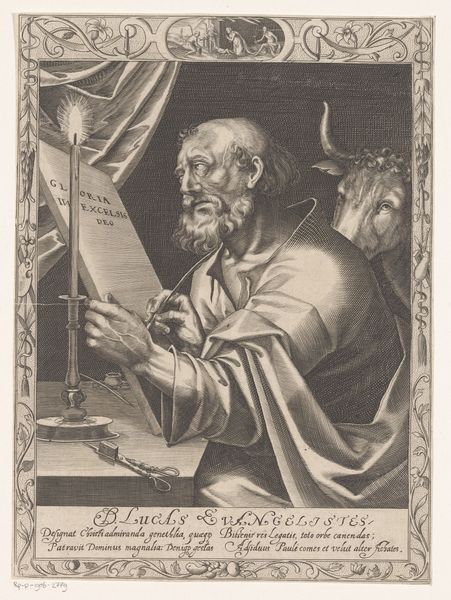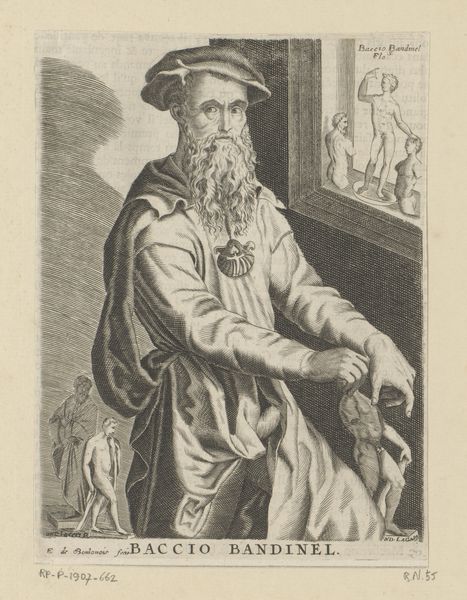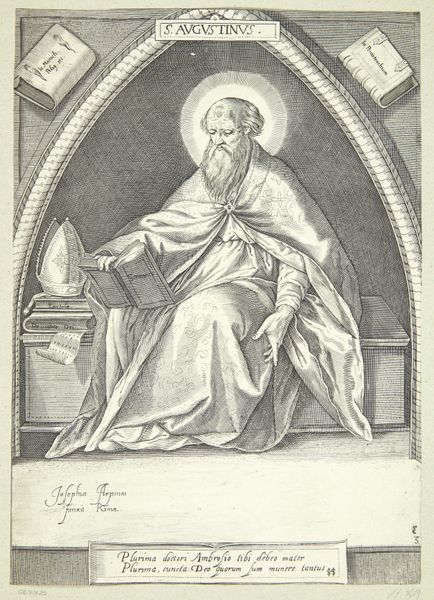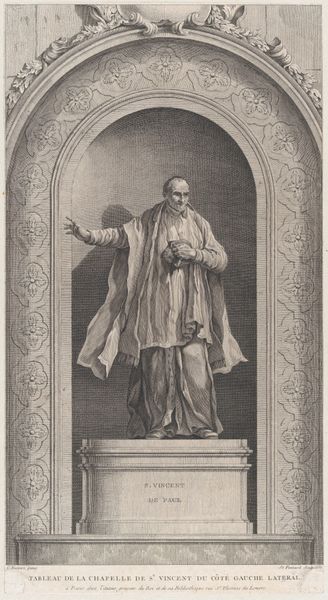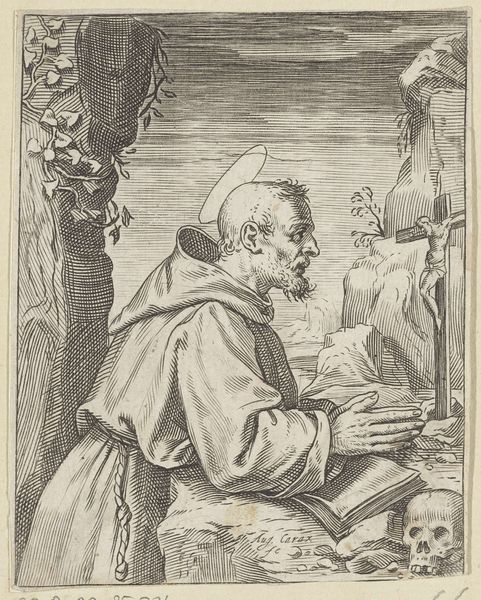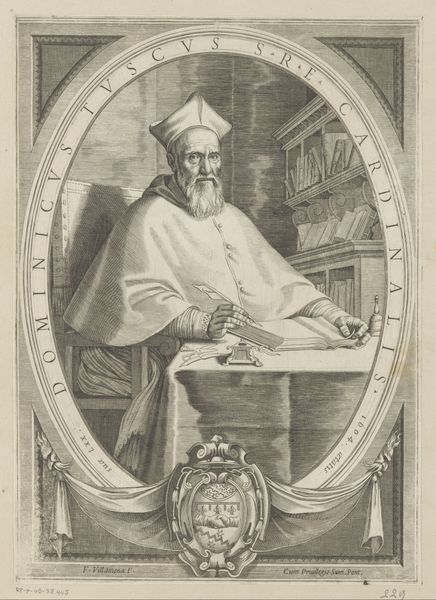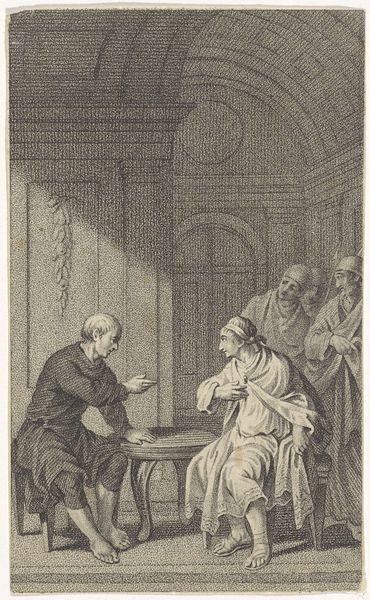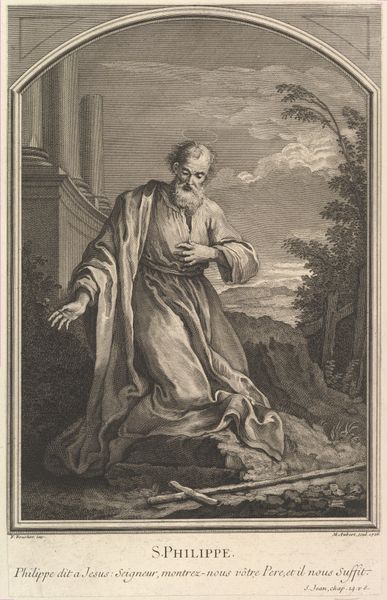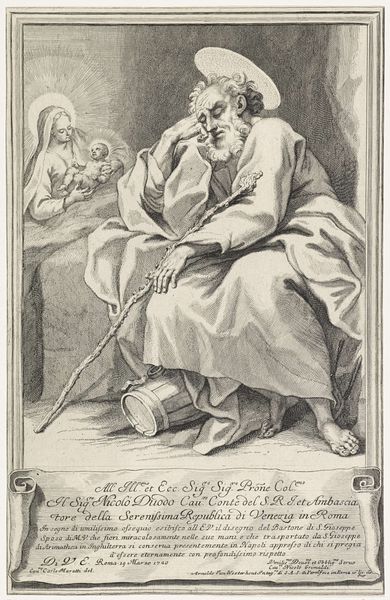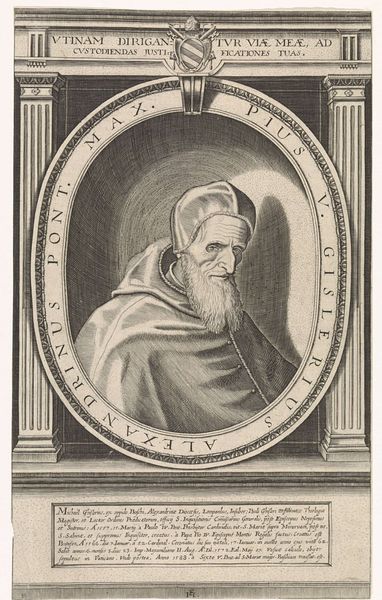
print, engraving
#
portrait
#
baroque
# print
#
italian-renaissance
#
engraving
Dimensions: height 255 mm, width 185 mm
Copyright: Rijks Museum: Open Domain
Editor: This is an engraving from between 1658 and 1679 by Giuseppe Maria Testana. It’s titled "Portret van frater Hieronymus Foroliviensis," or "Portrait of Brother Hieronymus Foroliviensis." The composition feels very formal and a bit severe, due to the limited use of gray-scale; what stands out to you? Curator: What I notice is how the portrait operates on several layers. On the one hand, it’s a depiction of a religious figure, but it's equally a piece of propaganda that needs to be interpreted. We have Hieronymus, the subject, presenting an image of the Virgin Mary to the viewer, sanctifying his position and devotion. Do you see any tensions arising between these layers? Editor: Tensions? Not at first glance. It seems pretty straightforwardly religious. Curator: Well, let's consider the context. The Baroque period, while deeply religious, was also a time of political and social upheaval. The Catholic Church faced challenges from the Reformation. So, how does this portrait actively participate in reinforcing specific values and beliefs amid that background? How is he leveraging images of women in relation to the Counter-Reformation? Editor: Ah, I see! It’s not just a portrait, it's a statement. Showing Hieronymus presenting Mary emphasizes the Church's role as an intermediary and reaffirms its authority by reminding viewers of the proper feminine image and the holiness of motherhood. Curator: Exactly! And consider the choice of an engraving. Prints were more accessible than paintings, so this image could disseminate these ideas widely. Editor: So, the image is communicating something specific to the audience of that era beyond his likeness. Thanks, I never considered that. It encourages me to dig deeper. Curator: It's all about seeing art as a product and reflection of its time. A piece can offer critical insights into power dynamics when situated against history.
Comments
No comments
Be the first to comment and join the conversation on the ultimate creative platform.
